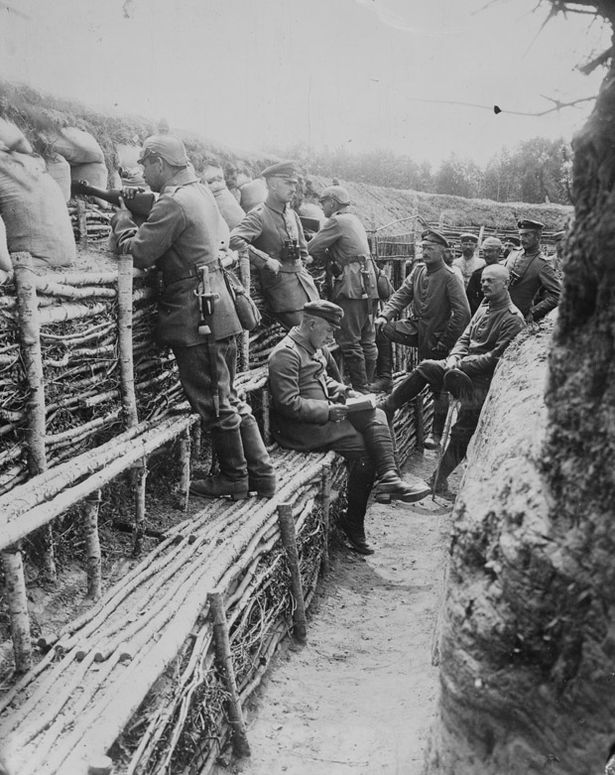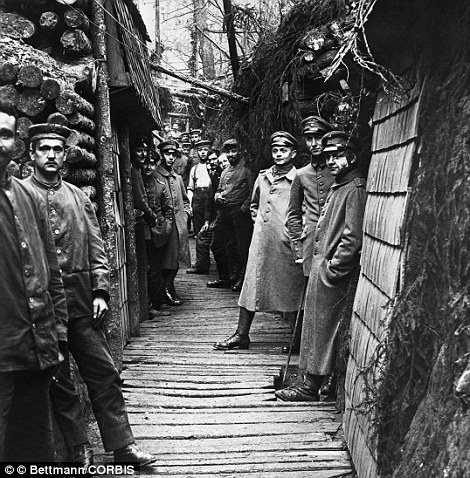British Set Monthly Body Count: 200,000
The German Goal, Bleed the French White
Special to The Great War Project
(24-26 October) In the autumn of 1915 one hundred years ago, nearly everywhere the Germans and Austrians have the upper hand — on the Western Front, especially on the Eastern Front, and on the Gallipoli Front in western Turkey.
But they are in serious trouble nevertheless. German and Austrian leaders “had long known that in any extended conflict,” writes historian Alexander Watson, “their forces risked being crushed under the weight of larger armies.”
“After a year and a half of fighting, despite the vast conquests in the east, there are plenty of signs that this time was approaching.”
Recruitment in Britain and Russia is growing. Italy, with its million-man army, enters the war on the Allied side, and by this time a century ago, the Allies can field armies that are half again as large as the Germans and Austrians.
“The [Allies] had also made great progress,” reports Watson, “in ending the material shortages that from late 1914 had hampered their campaigns.”
By this point in the war, every day French factories are turning out 100,000 shells for their feared 75 mm guns.
The Russians are also turning out four times in field munitions than what they produced at the beginning of the war.
And now the United States is playing a significant role — to the benefit of the Allies.
“To the outrage of the German public, who read about the deliveries in their newspapers,” reports Watson, “neutral America was supplying millions of pounds worth of arms and equipment for Britain’s New Armies, recruited in wartime to deliver the final blow for victory.”
Watson observes that Allied generals “were not just accumulating material superiority; they were finally learning how to employ it effectively.
Until now, the Allied forces have great difficulty coordinating their offensive operations. Now the commanding generals are determined not to repeat those devastating mistakes. Their goal: To mount coordinated attacks and overwhelm the Germans and Austrians in the coming year.
Still the Allies learn another hard lesson: Despite repeated attacks on entrenched German forces on the Western Front and the expenditure of hundreds of thousands of lives, these tactics prove ineffective. According to historian Watson, “Some generals had concluded it was useless even to try to break through.”
General Philippe Petain, the future French commander-in-chief, has come to the conclusion, “There will be no decisive battle as in other times…Success will come eventually to the side that has the last man. The only objective we should seek is to kill as many Germans as we can while suffering a minimum of losses.”
Now for both sides, success is not judged by how much territory the enemy takes, but in how many bodies can be counted.
Simply put, the strategy now is attrition. By the late fall of 1915, the British actually calculate a monthly quota of death: 200,000 German soldiers “killed, maimed or otherwise disabled. Only once this bloodshed had been completed was the great combined offensive to be launched.”
The Germans also mount a strategy of attrition, but “more cunning and complex,” according to Watson. “Not as a prelude to an offensive…but as a strategic tool, capable of bringing at least one of Germany’s opponents to the negotiating table.”
The Germans see France as the weak link on the Allied side. The German goal is, through a combination of massive artillery attack and minimum use of infantry, to bleed the French white and force them out of the war.



